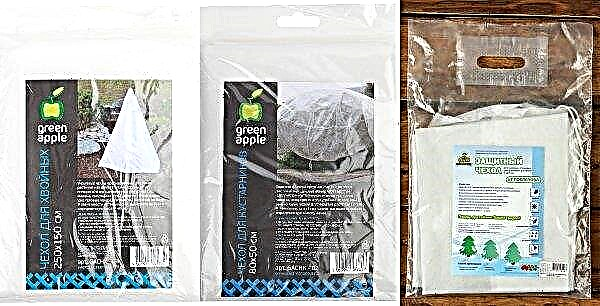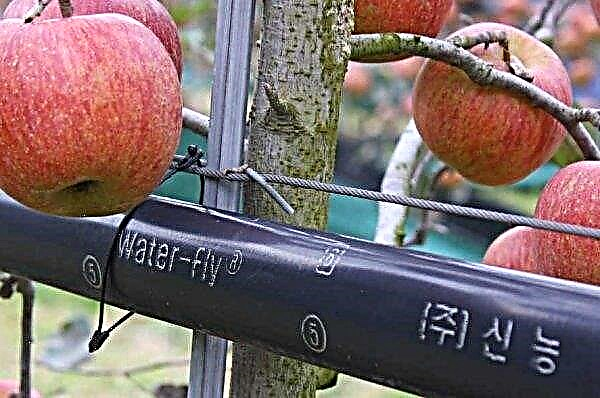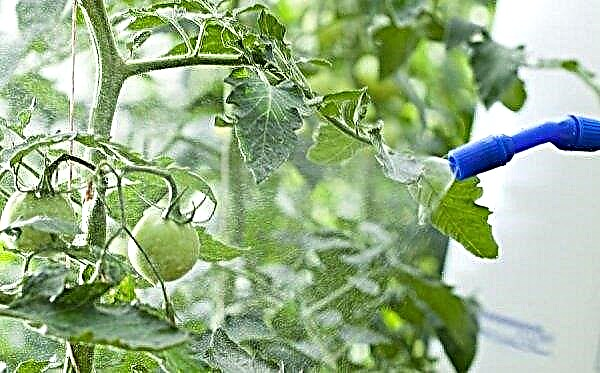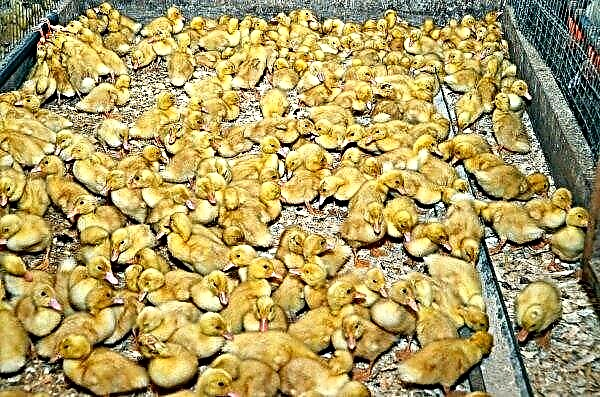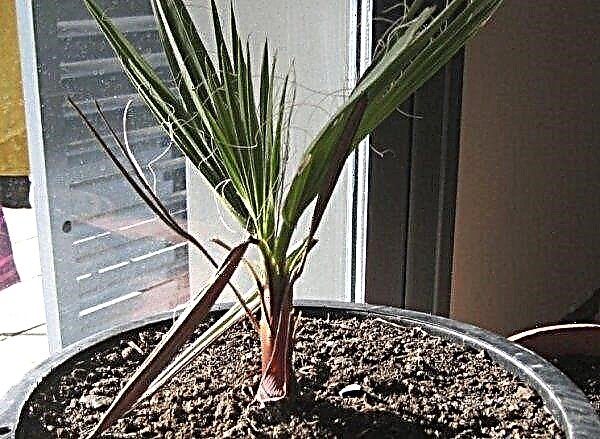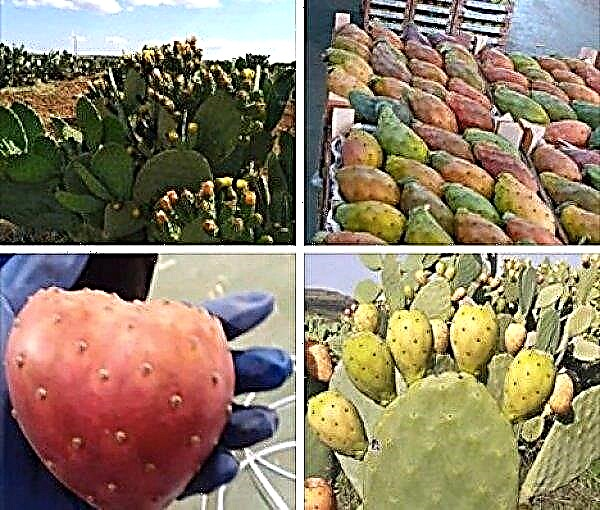Wheat is the dominant grain crop in many countries. The introduction of innovations and the use of modern technologies have raised productivity to unprecedented heights: 8-12 t / ha. Despite the increased supply, there is still a great demand for this crop, which means that it is financially profitable to grow wheat. You will learn about how to do this correctly from this article.
Growth Requirements
Both spring and winter wheat suffers when it is in a soil with high acidity, so it is important that this soil index was kept in the pH range from 6 to 7.5. Black soil is undoubtedly the best soil for cultivation. Podzolic, and turf, and chestnut soils demonstrate good yields. Clay and sandy soil is practically not suitable for wheat: it can grow, but it is better to sow rye in the field.
 Regarding temperature, for spring crops, seed germination is possible at temperatures above 0 ° C. Shoots appear and live at + 4 ° C. However, the tillering process requires more heat. For its successful course, a temperature in the range of +10 ... + 12 ° C is required.
Regarding temperature, for spring crops, seed germination is possible at temperatures above 0 ° C. Shoots appear and live at + 4 ° C. However, the tillering process requires more heat. For its successful course, a temperature in the range of +10 ... + 12 ° C is required.
There are also requirements for soil moisture. While the seeds of soft varieties need up to 70% of this indicator, hard ones need a greater moisture capacity, an average of 5%.
The requirements for the temperature of winter wheat are not much different from those for spring. The only significant difference is that seedlings grow actively at +15 ... + 18 ° C. It is noteworthy that spring wheat is the main crop for 5 out of 10 leading regions by arable land in the Russian Federation. The highest productivity is observed in the Altai Territory, Orenburg and Omsk regions, Siberia. Winter varieties are best grown in Tatarstan, in the north-west of the country and in the Volga region.
Did you know? From wheat grain people learned how to get malt thousands of years ago. It was then that they learned to brew beer, and today this technology is also used for the production of strong alcoholic drinks.
Crop rotation
The main condition for a high yield of wheat is its proper placement in the rotation. It must be formed so that wheat alternates with broadleaf crops. The latter include:
- sunflower;
- soybeans;
- the beans.
This importance is due to the fact that nitrogen needs to be accumulated before sowing cereals. Legumes, such as peas and soybeans, allow this to be done. For winter wheat, the main condition is not the predecessor itself, but the presence of nodule bacteria on its roots. These organisms retain and accumulate atmospheric nitrogen in the soil. Of course, you can sow wheat repeatedly or even after barley, but this is not recommended.

Rising cereals without alternating with broadleaf crops poses risks and problems, including:
- increasing the incidence and development of serious diseases;
- uncontrolled emergence of weeds;
- decrease in the yield and quality of wheat;
- activation of pests.
Even with serious measures, such as mechanical and chemical tillage, seed disinfection and the introduction of insecticides into the soil, the yield will decrease by at least 10-15%.
When is the best way to sow wheat
If you decide to engage in sowing cereals, it is important to know about the timing of the organization of agricultural activities. Even a slight delay of a few days or, conversely, too early sowing, can lead to poor productivity. Failure to meet deadlines is so critical that you can not only not make a profit, but also not pay back the cost of seeds and the implementation of measures.
Winter
Years of research in agriculture helped to conclude that the best dates for sowing winter wheat are in the range between September 25 and October 5. Before the onset of frost, the plant will have time to unfold and give up to 4 shoots. The root system will have time to fully form, and the cereal will develop resistance to cold.

If planted earlier, the wheat will grow too much, because of which it will lose its winter hardiness, and pests will have more time to attack the agricultural crop. The greatest losses during harvesting are observed in the case of late sowing, in mid-October. Wheat does not have time to grow, form a rhizome and create shoots.
However, dates are only average values obtained after years of observation. In addition, their range is quite large. Rather, the main role here is played by the climate, which determines soil moisture and air temperature.. So focus on the current weather conditions and follow the meteorological forecasts.
Spring
To determine the timing of sowing spring wheat, it is important to know the climatic features of the region, which is supposed to grow agricultural crops. In the main crop areas, such as Western and Eastern Siberia, June drought and July rains are observed. It is important to take this factor into account in such a way that precipitation falls on the main part of the cereal growing season.
If you sow wheat too early in early May, it is more likely that it will not have enough moisture, and a significant part of the crop will be lost. If you sow too late, making full use of rainfall, you will have to harvest in unfavorable autumn weather, when the cereals have already been damaged by frost.
 Based on this, the best time for sowing spring wheat is in the date range between May 15 and 25. This will help to avoid the strong influence of both drought and the first autumn frosts.
Based on this, the best time for sowing spring wheat is in the date range between May 15 and 25. This will help to avoid the strong influence of both drought and the first autumn frosts.
Soil preparation for sowing
The purpose of soil cultivation before sowing crops is to completely get rid of weeds, as well as to level the field and organize the soil structure in such a way that moisture is most effectively stored in it. The classic technology is to create the so-called pure steam. When implementing this method, the cultivated field does not sow for one summer and “rests”.
The pure steam method consists of:
- stubble peeling;
- five-time cultivation in the summer;
- spring or autumn plowing.
Important! Instead of herbicides, harrowing or cultivation can simply be carried out more often. So chemicals will not have to be injected into the soil, and it will cost several times cheaper, based on financial considerations.
To keep the field clean, herbicides and special mixtures are introduced into the soil. Among the most popular drugs of this type are Roundup and Dianat.
In early spring, the field is leveled and harrowed.. With the onset of wet weather, weeds begin to appear, and then the steam is cultivated several times. The depth of processing is gradually reduced: first, 10 cm of soil is treated, after - 8 cm. With each subsequent procedure, reduce the layer that undergoes cultivation by 2 cm.
 In drought, cultivation must be replaced by cutting weeds so as not to deprive the field of moisture even more.
In drought, cultivation must be replaced by cutting weeds so as not to deprive the field of moisture even more.
Seed selection and preparation
To choose the right wheat variety, you need to take into account the specific climate of the growing region. For example, if you plan to grow winter crops in the north-west of the country, be sure to select frost-resistant varieties. If this will grow on the field of the southern regions, you can not be afraid of cold weather and choose a variety solely in terms of yield.
The main condition is high quality seed. Seeds should be collected from high-yielding fields, since a high yield indicates excellent biological properties of the plant. To enhance the positive qualities of the seed, it must be thoroughly cleaned and sorted.
Often, for the most efficiency, special machines are used for this purpose - grain cleaners, or trimers. It is they who select the largest fractions of seed. To get a big crop, the field is sown with the largest seeds. To improve the germination rate, the grains can be heated in the sun for up to 5 days.

Seeding rates per 1 ha
The seeding rate per 1 ha depends not only on the climate, but also on the soil. An important role is played by the type of wheat: it is spring or winter. So, for the first in Western Siberia, 4–6 million seeds are considered the norm for the forest-steppe. In the European part, the number of grains in the range of 5.5–7.5 million is considered optimal.
The norm of Eastern Siberia is the average of the two previous regions: 4.5–5 million units of planting material need to be sown. This difference in numerical values is due to the type of soil. Since chernozem prevails in Siberia, fewer seeds are needed than in the west.
Did you know? Wheat was one of the first domesticated crops. This happened between 8–4 thousand BC. e.
For winter wheat, the seeding rate has long been calculated by researchers. For most varieties that are used in Russia and the near abroad, this value is 4–5 million germinating seeds, which is approximately equal to 160–250 kg per hectare of field.

Sowing methods
For both spring and winter wheat, the following sowing methods are most common:
- private;
- cross;
- narrow row.
The latter two are considered the most progressive, since they imply the most uniform growth of crops on the field. This allows you to fully develop the root system of each instance of wheat and improve bushiness, which leads to a larger yield.
For the effective cultivation of winter wheat, it is important to consider the location of the beds. It is noteworthy that when they are distributed from north to south, the yield increases on average by 10–12 q per 1 ha of area. This factor is determined by the optimization of plant lighting: in the first half of the day, the light falls on one part of the field, and in the second - on the other.
 Back in 1972, it became known that crops sown with stubble cultivators tolerated frosts better. In addition, productivity increased if these mechanisms were used when sowing the field.
Back in 1972, it became known that crops sown with stubble cultivators tolerated frosts better. In addition, productivity increased if these mechanisms were used when sowing the field.
Intensive technology
Intensive cultivation technology is used to increase the volume of wheat crops. It involves the use of various fertilizer complexes, balanced specifically for this plant. This need is due to the fact that wheat, whether it is spring or winter, is demanding on the soil, namely: on the content of the necessary nutrient mineral substances in it. It is desirable that these elements be presented in easily digestible form.
It is impossible to determine exactly which fertilizers to use, since the application of substances depends on:
- soil composition;
- predecessor culture;
- climatic conditions.
Organic fertilizers are usually introduced into the soil in an amount of 20-30 tons per 1 ha. To increase immunity and resistance to cold, phosphorus and potassium are mixed into the soil. The norm of these minerals is 10–20 kg per 1 ha.
During the year, it is recommended that fertilizers containing nitrogen be added every quarter.. Most of all this applies to the fall season, when the soil in itself practically does not contain this substance.

Care
Like any other plant, wheat needs care. In this case, it contains rolling after sowing, as well as harrowing in early spring. The first is required when the weather is dry and windy.
Important! Rolling cannot be carried out using all-metal equipment. It can cause mechanical damage to crops, which will entail a decrease in crop volume.
Rolling reduces moisture loss, and also literally presses the seeds to the ground, which positively affects germination.
If there is a livestock farm near the field, be careful not to graze in your area. Even overgrown wheat is unacceptable to interfere with further development - this can reduce the yield by one third or entail the death of the crop.

Top dressing
For winter wheat, top dressing is best done in the fall. At this time of the year, it is recommended to process the seedlings with the help of specialized drugs. The most popular of these is Moddus. On 1 ha it is enough in the amount of 250 g per 1 liter of water. Please note that growth regulators should not be used during periods of plant stress when the weather is too dry.
For both spring and winter wheat, it is recommended to administer a high dose of nitrogen once. Normally, its amount is 90 kg / ha in its purest form. If the introduction of ammonium nitrate is supposed, then it already needs 260 kg.
To increase gluten in wheat, you can enter sulfur. The content of this substance increases the baking quality of grain. During the tillering period, copper sulfate is recommended as top dressing. If the hydrogen index is more than 6 units, then manganese must be introduced into the soil.

Weed and Disease Control
Preparatory measures for tillage before sowing wheat in themselves are preventive measures. They prevent the appearance of weeds and prevent the development of diseases. That's why so it is important to carry out harrowing and cultivation on a regular basis every time after harvesting. If there is a suspicion that the weeds were not completely eradicated, herbicides should be used (e.g. 2,4-D). This must be done during the entire tillering period.
To destroy almost all weeds, 1.5 kg of amine salt, as well as 400 g of butyl ether are needed per 1 ha. These substances are dissolved in 25-100 l of pure water, after which the crops are sprayed from the air transport. If this is not available, then much more liquid is consumed: up to 500 liters per 1 ha.
Harvesting
Wheat is harvested in two ways: separate and direct harvesting. The second in the world is considered the most effective, and therefore is the most common. Immediately before the wheat harvesting process itself, potential yield assessments are usually carried out. According to the results of this procedure form the consignment. They depend on the class of products and are divided into:
- strong;
- valuable;
- weak.
The first consists of the highest grade, i.e., grades 1 and 2. Valuable contains the "golden mean" of the crop. Part of the harvest of classes 4 and 5 belongs to a weak batch. These fractions are formed not only taking into account the cultivar variety, but also its predecessor in the field.

The amount of production can be completely different depending on the region and the type of wheat. Harvest is considered really good if its volume is 10 t / ha. Great luck when this value reaches the level of 12 t / ha. For example, a world record for wheat yields was recorded in 2017 in New Zealand, where about 16.7 tons of products were harvested from 1 ha.
Planting and caring for wheat is painstaking work. But if everything is done correctly, correctly choosing the grade and date, as well as taking care of your field, the work will surely pay off. With the help of scientific achievements in the field of breeding, agriculture today has a chance to make huge profits. Wheat will never lose its world popularity, because everyone will always need bread.

